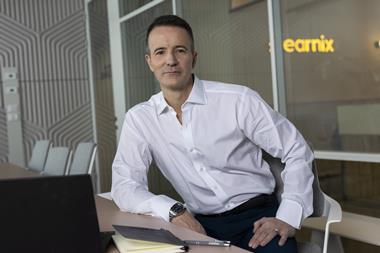New capacity in these markets could come from ‘nimble’ MGAs, however brokers must have ‘grown up’ conversations with clients to successfully manage expectations around higher premiums and reduced coverage, says broker boss
The “really tough” directors’ and officers’ (D&O) insurance market is “naturally maturing” as claims activity drives up previously competitive pricing, says Jake Fox, group managing director at broker JM Glendinning.
Speaking exclusively to Insurance Times, Fox explains that the D&O market has followed the trajectory of professional indemnity (PI) insurance, which faced the brunt of “challenges” arising from the Grenfell Tower fire in 2017 and the thematic review conducted by Lloyd’s in 2018, which identified PI insurance as one of the key loss-making lines for poorly performing syndicates.
“D&O followed that and yes, we saw a significant reduction in capacity in the D&O world,” Fox says.
“We saw insurers reducing their appetites in terms of limits, in terms of the extent of cover. We saw increasing deductibles.”
This is illustrated by findings in the Quarterly D&O Pricing Index: Fourth quarter 2021 report, published by Aon in February 2022. The report showed that 74% of primary D&O policies renewing with the same limit and deductible in 2021’s fourth quarter experienced a price increase.

Furthermore, the average price per million for primary D&O policies increased by 16.8% in Q4 2021, compared to the same quarter in 2020. This marks the 16th consecutive quarter of year-on-year price increases, following a period of 18 consecutive quarterly price decreases in the prior four years.
Although recognising that the D&O market is “really tough” and “hardening”, Fox notes that these price trends also reflect “a natural maturing” in this line of business as well.
He explains: “Over the years, in softer trading conditions, we’ve seen the likes of D&O and cyber being added on as additional benefits to commercial combined policies or PI policies - it’s not that they’ve been given away for free, but they’ve definitely been sold on the basis of them being relatively competitively priced.
“Whilst the claims activity wasn’t there, that was absolutely fine, but it was almost inevitable that at some stage, the claims activity was going to start to catch up with the marketplace.
“I’d describe this as a hardening of those markets, but it also might just be a general maturing of those markets.
“Brokers and their clients have got to get used to the fact that there are genuine exposures when it comes to D&O insurance. There are genuine exposures when it comes to cyber liability insurance. And if insurers are paying those claims, at some point the premiums were going to catch up.”
Fox adds that businesses “would have been paying a reasonably chunky rate for their professional indemnity [insurance] and it almost felt like they were getting their D&O and cyber liability [cover] for free”.
He continues: “There’s a natural catching up of the D&O and cyber liability rates. There had to be a natural correction there.”
Finding capacity
Despite rising premium prices, Fox is optimistic that more capacity will enter the D&O and cyber liability market – he predicts this will come from MGAs rather than “traditional insurers”, however.
He says: “We’re seeing some of the MGA capacity being more nimble when it comes to things like D&O than we are some of the composite, traditional insurers that perhaps have been the ones that have led the charge over the last 10, 15 years when it comes to D&O.”

Managing client expectations
Fox adds that brokers must also be aware of “what it is you’re looking to insure” as hard market conditions could cause insureds to pay higher premiums for less cover compared to previous years.
He says: “D&O policies traditionally have wrapped up the traditional D&O, entity cover and employment practice liability to become a true management liability policy. Some of that coverage is tougher to get now.
“You can still get the traditional coverage for your directors, your officers, but it might be tougher to get the entity cover, or the entity cover to the extent you want to get it covered. It might be tougher to get the employment practice liability, or certainly if you’re getting it, you’ve probably got a higher deductible then you would have done.”
These situations can create uncomfortable conversations with clients, however brokers that are “advice led” and people-centric should benefit from smoother communications.
“Hard markets are really difficult, of course they are, but if you’re communicating with your clients and managing expectations and you’ve got that true triparted relationship between broker, client and insurer, it should make those discussions much more straightforward,” Fox explains.
“If you understand your market, understand why insurers are taking action such as they are, if you’re then prepared to have some grown up discussions with your clients to manage their expectations, that should make those discussions easier.
“We’re all hopeful that some of these markets will ease over time, but if that’s just not the commercial reality, we all need to be prepared to have those discussions with our clients.”













































No comments yet